Small gardens are like cozy novels—brief but bursting with charm. You don’t need acres of rolling land to create a green haven.
Sometimes, all it takes is a patch of soil, a pinch of creativity, and a plan that knows how to bend the rules without breaking them. Whether your garden is the size of a bath mat or a single window box, there’s always room for magic.
Let’s dig into 17 realistic and game-changing ideas to turn your small garden into a lush escape—one that looks bigger, works harder, and soothes the soul.
1. Vertical Gardening: Think Up, Not Out
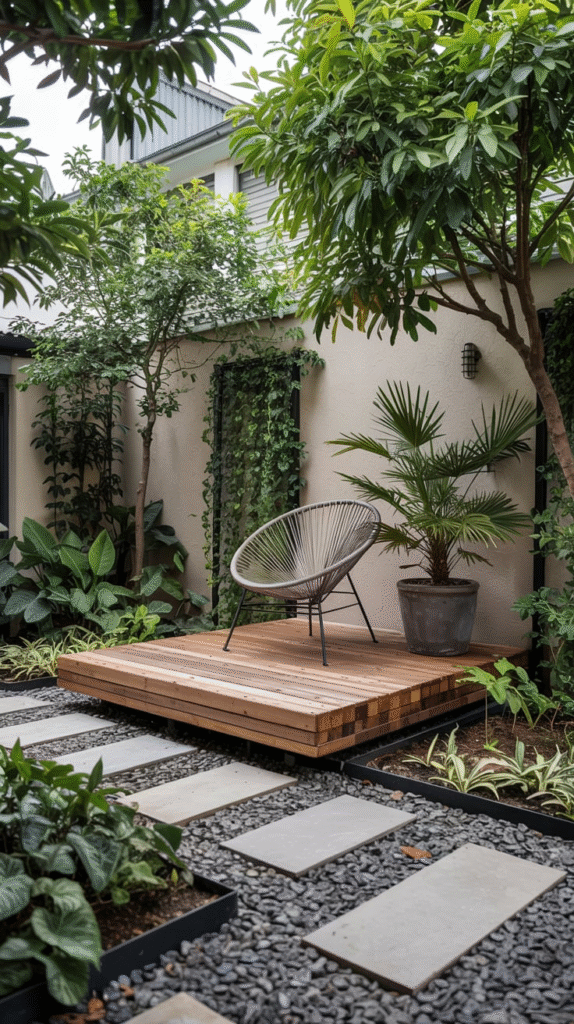
When floor space is tight, walls become your best friends. Trellises, wall planters, pallet gardens, or even hanging shoe organizers can become your new canvas.
I once transformed a blank side wall of a small backyard using an old wooden ladder. I attached pots to the rungs with hooks, filled them with herbs, and watched a plain corner turn into a cascading edible tapestry.
Climbing plants like clematis, sweet peas, or ivy are perfect for this. Not only do they save space, but they also add softness and a sense of height that draws the eye upward.
2. Use Raised Beds for Layered Beauty

Raised beds aren’t just for practicality—they can become the architectural bones of your garden. Layered heights give structure and guide the eye.
Stick to rectangular or L-shaped beds along the perimeter. They create clean lines and leave space for seating or a walking path in the center. Try mixing vegetables with flowers for a modern cottage garden effect.
I remember building a 2×6 ft raised bed and growing cherry tomatoes on one side and marigolds on the other. Not only did it look cheerful, but the marigolds also kept pests away.
3. Mirror Magic: Reflect and Multiply
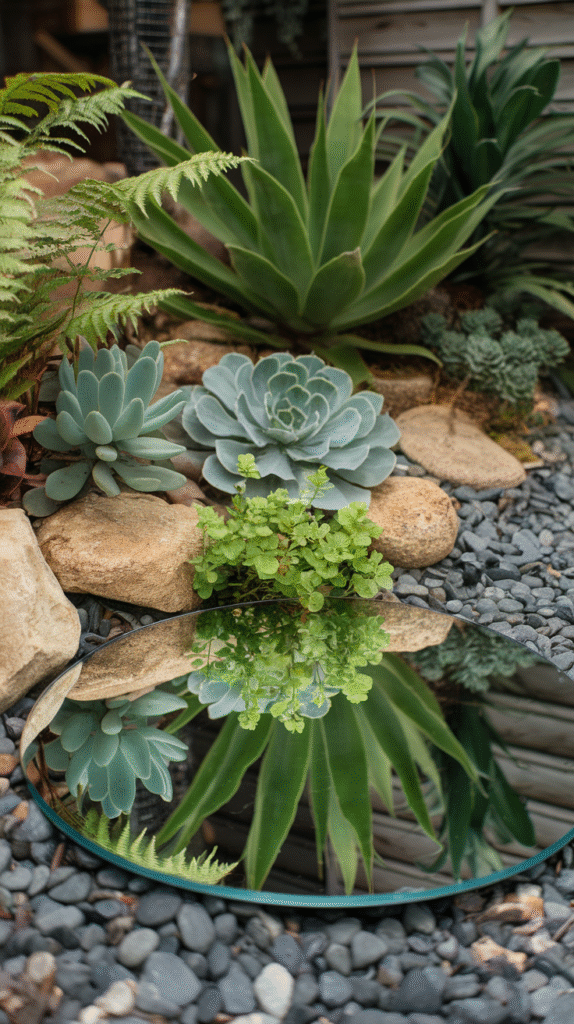
Here’s a trick straight out of a magician’s playbook—use mirrors. Strategically placed, they can make a tiny space feel double its size. Mount one against a fence or wall and frame it with climbing plants to disguise the edges.
Go for weather-resistant garden mirrors or repurpose an old vintage window frame fitted with reflective panels. It’s like giving your garden a secret portal to another dimension.
4. Curate a Container Jungle
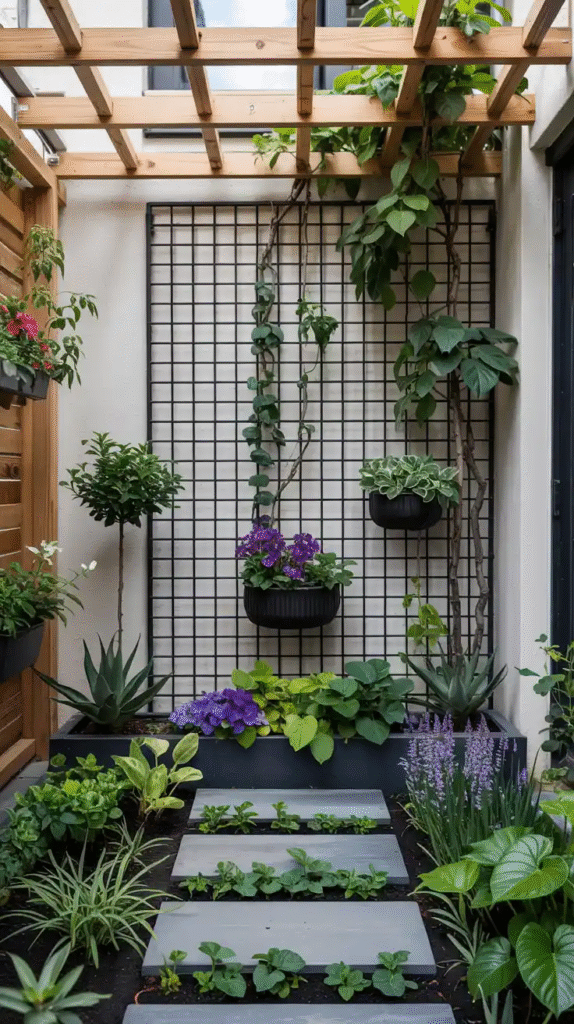
If you don’t own the soil, own the pots. Container gardening lets you create a mobile and modular garden that moves with your whims.
Group pots in odd numbers and play with heights, textures, and leaf colors. A tall spiky grass, a trailing lobelia, and a blooming geranium in different pots create a mini jungle vignette.
Pro tip: Use wheeled plant stands if your garden doubles as your laundry space or weekend BBQ spot.
5. Multipurpose Furniture: Where Design Meets Utility
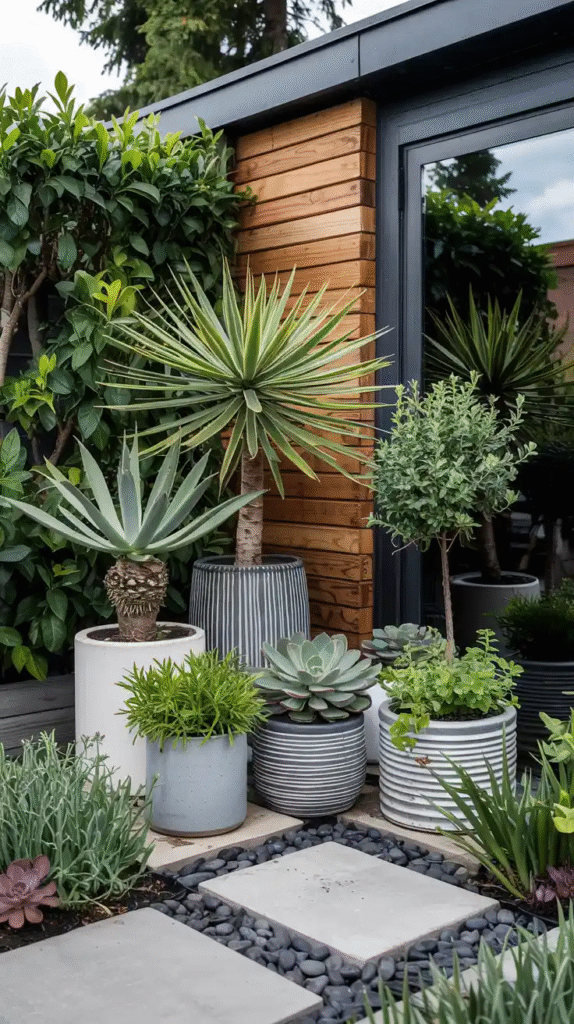
Every square foot counts in a small garden, so why not make your furniture pull double duty? Benches with built-in storage, side tables that hold gardening tools, or a stool that becomes a plant stand are all worth their weight in gold.
I once used an old wooden trunk as a coffee table. It stored garden gloves and seed packets inside and played host to potted succulents on top.
Look for foldable furniture too—it disappears when not in use, leaving you more breathing room.
6. Divide and Rule: Create ‘Rooms’
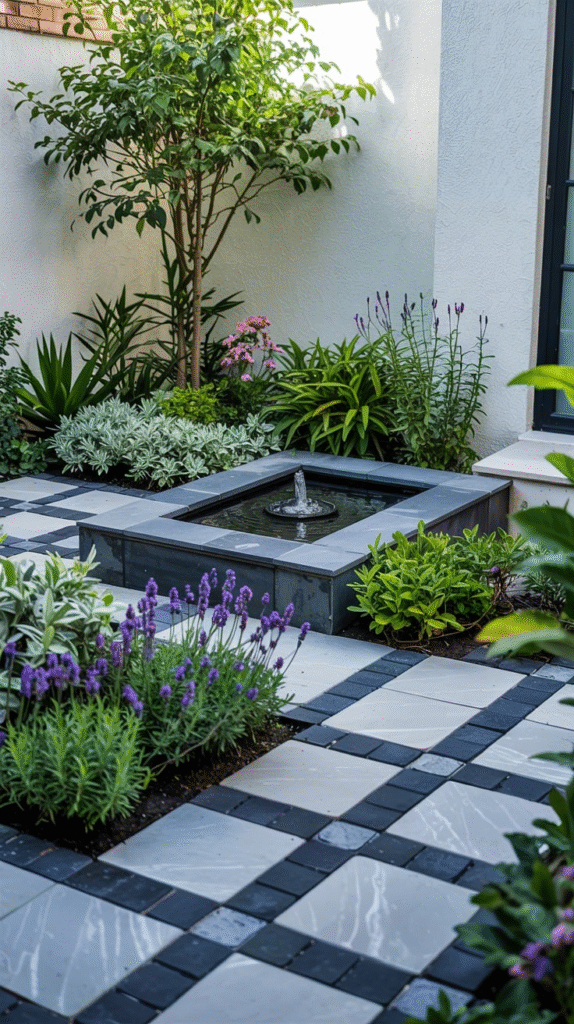
Here’s a paradox: dividing a small garden can actually make it feel larger. Break your space into zones—a reading nook, a vegetable patch, a dining corner. Use low hedges, plant groupings, or pergolas to separate these areas.
A friend of mine used tall grasses in planters to carve out a mini lounge zone behind her garden shed. It became her go-to hideaway for evening tea and paperback thrillers.
7. Play with Perspective: Paths and Patterns
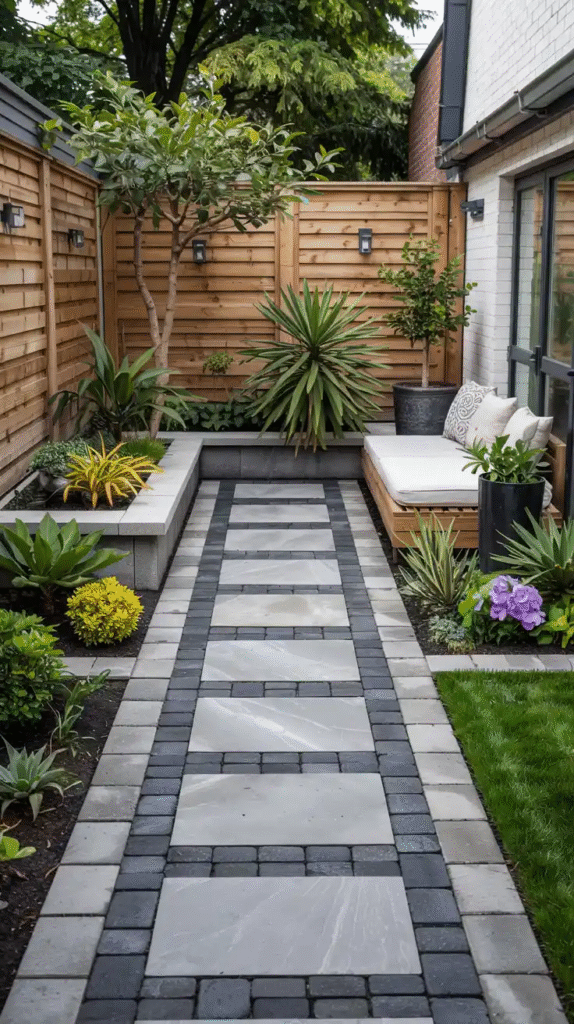
Want to make your small garden feel endless? Use diagonals, curves, or zigzag paths. Straight lines lead the eye straight out; diagonal or meandering ones add mystery and suggest more space beyond.
Try gravel, stepping stones, or herringbone brick patterns to keep it low-maintenance but eye-catching. Bonus: paths help define structure, keeping wild growth in check.
8. Hang a Canopy or Shade Sail
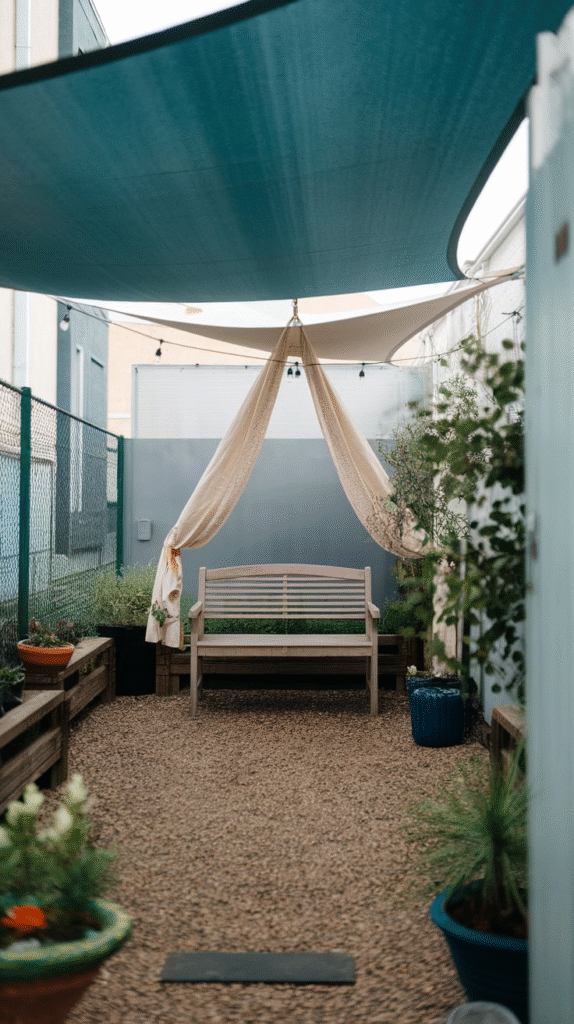
Overhead structure gives intimacy and style. A shade sail, fabric canopy, or even a string of outdoor lights suspended above adds a ceiling-like feel without blocking the sky.
I once strung fairy lights across bamboo poles and it instantly turned my small patio garden into a twinkling evening escape. Add hanging planters from above for a floating garden vibe.
9. Opt for a Focal Point
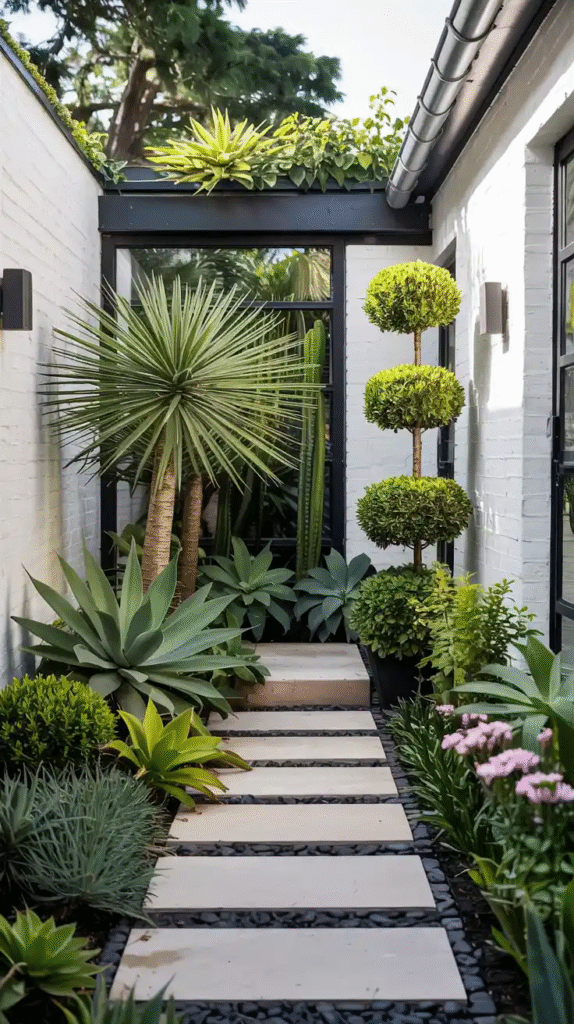
Every garden, no matter how small, deserves a centerpiece. This could be a birdbath, sculpture, colorful bench, or even a dramatic plant like a red-leafed Japanese maple.
A bold focal point creates a sense of intention, drawing the eye and giving the garden a purpose rather than feeling cluttered or accidental.
10. Choose Plants That Do More
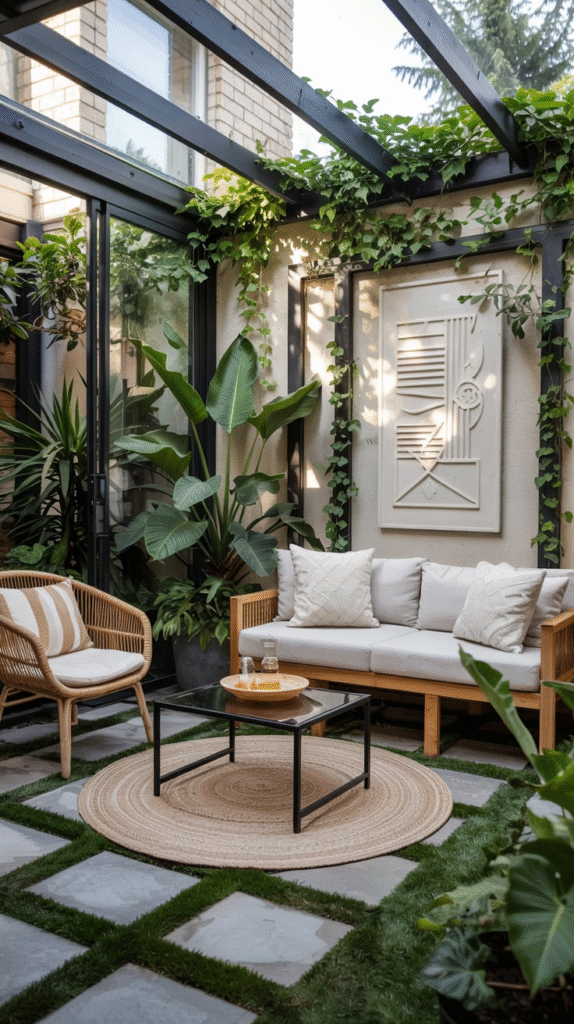
Be picky about your plant selection. In small gardens, you want workhorse plants—those that bloom long, resist disease, and maybe even attract pollinators.
Herbs like rosemary, lavender, or thyme are fragrant, hardy, and edible. Flowering perennials like echinacea, coreopsis, or salvia bloom for months and feed the bees.
Avoid one-season wonders. Instead, choose plants that earn their keep year-round.
11. Create a Sensory Corner
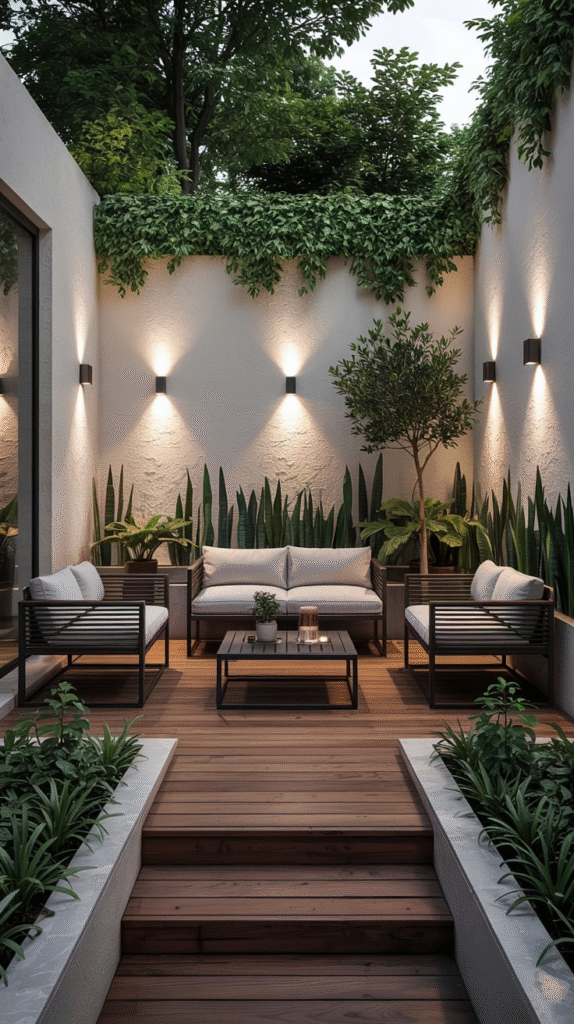
Small gardens are perfect for intimate sensory experiences. Think rustling grasses, fragrant blooms, or a tiny water fountain bubbling in the corner.
Plant lemongrass or mint near your seating area so a simple breeze brings a burst of fresh scent. Add wind chimes or even a small tabletop water feature to engage sound.
This sensory garden effect feels like a hug for your brain after a stressful day.
12. Keep It Evergreen (Literally)

Structure matters in small gardens. When the flowers fade, your space still needs bones. That’s where evergreens and ornamental grasses come in.
Use boxwood balls, juniper spirals, or feather reed grasses to add year-round interest. They act like reliable background actors—subtle, strong, and always on set.
Plus, evergreens help define the space and make seasonal planting feel more intentional rather than scattered.
13. Add a Living Wall
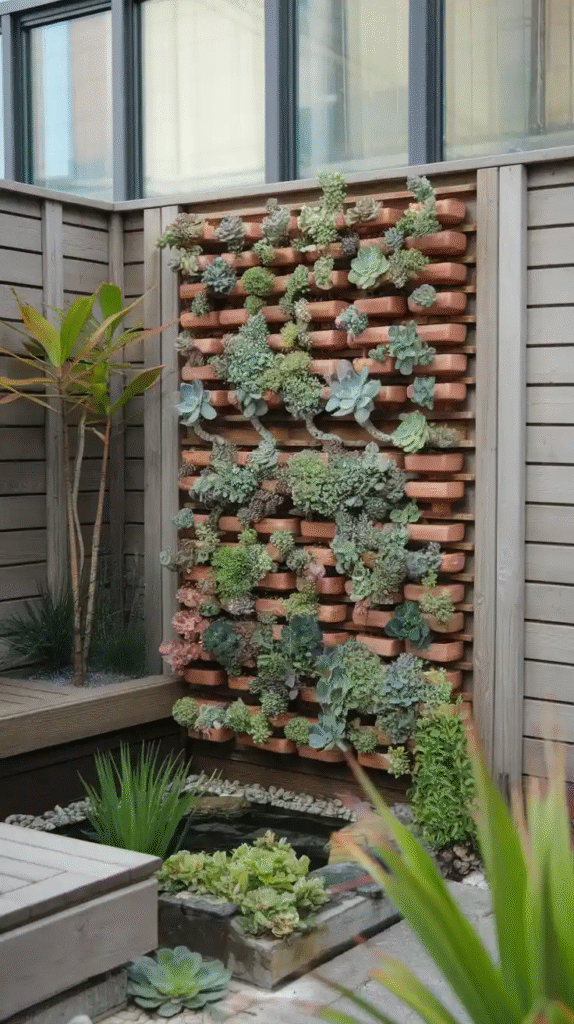
If vertical gardening feels too informal, take it one step up—literally—with a living wall. Modular living wall panels or DIY pallet walls packed with succulents, ferns, or herbs can cover an entire fence and transform it into a breathing piece of art.
Install an irrigation system if you want low maintenance, or go full DIY and water it by hand—it’s a meditative experience.
14. Choose Compact Plant Varieties
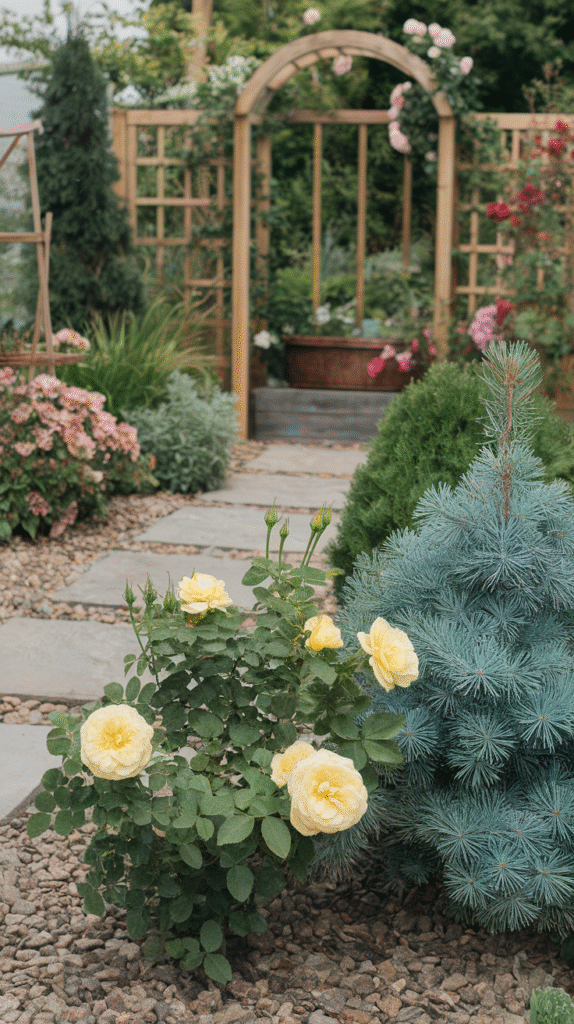
Seed catalogs are your goldmine here. Look for varieties labeled ‘dwarf’, ‘miniature’, ‘compact’, or ‘patio’. These plants are bred to behave in small spaces while still producing flowers or fruit.
For example, try ‘Tiny Tim’ cherry tomatoes, ‘Baby Boo’ pumpkins, or ‘Little Lime’ hydrangeas. They stay neat but still deliver big on beauty or harvest.
15. Light It Right
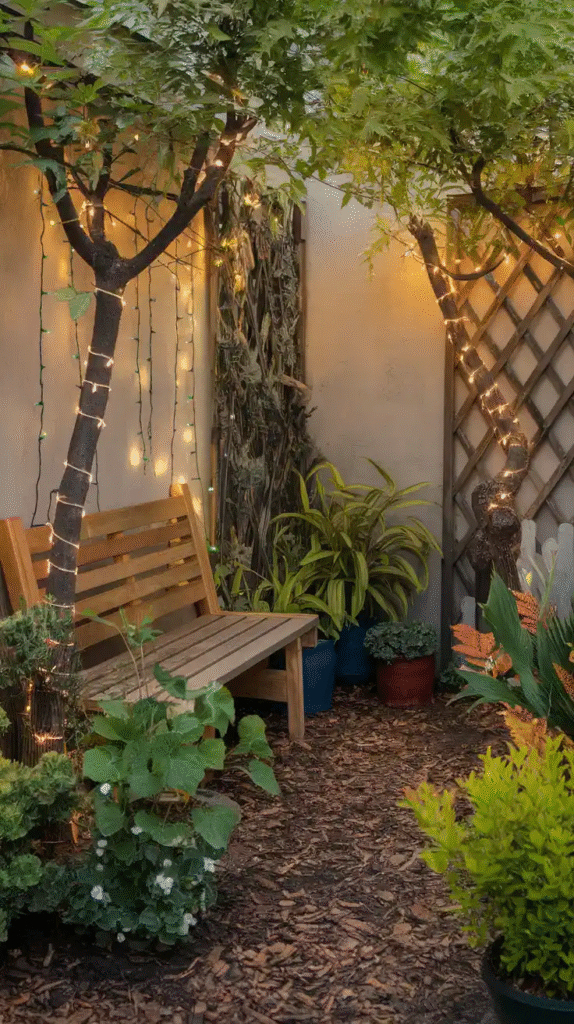
Lighting can take a small garden from “meh” to magical. Focus on layered lighting: string lights for ambience, solar path lights for safety, and a spotlight or two on feature plants.
Use warm white bulbs for a cozy glow. If you host guests, place a light near seating areas and one at eye level—perhaps from a wall-mounted lantern or a hanging bulb.
My rule of thumb: if you’d take a selfie in that lighting, your plants will love it too.
16. Make Use of Corners
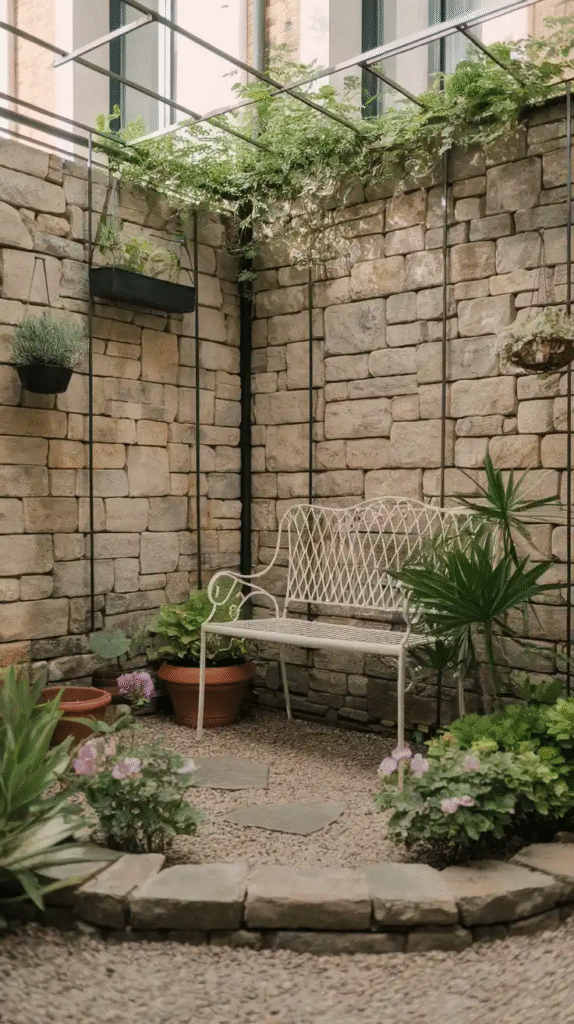
Corners are often wasted real estate in small gardens. Use tall planters, corner shelves, or tiered ladders to build vertically and maximize those hidden zones.
I once turned an unused garden corner into a strawberry patch by stacking three planters in a pyramid shape. It gave me fruit, charm, and freed up the rest of the space.
Don’t let corners just collect leaves and spiders—they’re secret goldmines for clever design.
17. Embrace Minimalism (With Warmth)
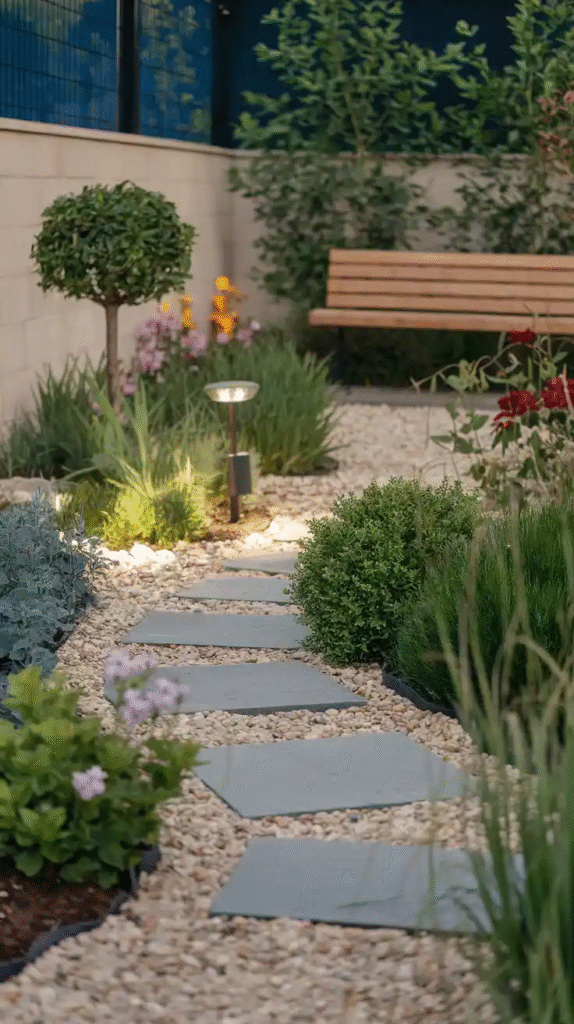
With limited space, less really is more. But minimalist doesn’t mean cold. Choose a tight palette of materials and colors—maybe two kinds of stone, three plant colors, and one type of wood—and repeat them throughout.
For instance, a gravel path, teak bench, and sage green foliage can create a serene Scandinavian vibe. Add cozy throws or clay pots for warmth.
Resist the urge to cram in every plant you love. Instead, curate your space like a museum—everything earns its place.
Conclusion
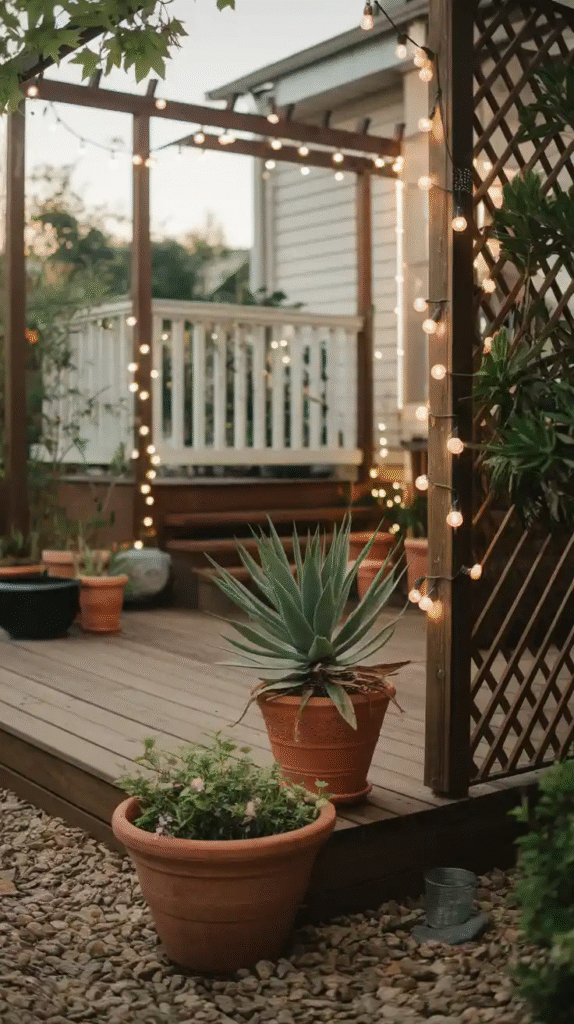
Your small garden isn’t a design challenge—it’s an invitation to creativity. It’s a place where limitations birth innovation. Where a rusty watering can becomes art, and a broken chair becomes a flower stand.
So take these ideas not as rigid rules but as stepping stones. Mix and match, experiment, and listen to what your space wants to become.
I’ve seen gardens bloom on balconies, rooftops, fire escapes, and even old wheelbarrows. The only real requirement is heart—and maybe a decent trowel.


Leave a Reply